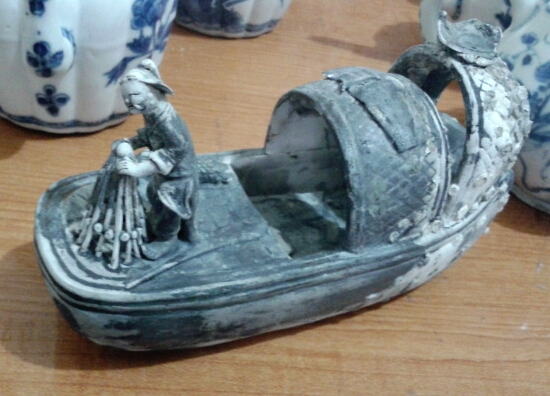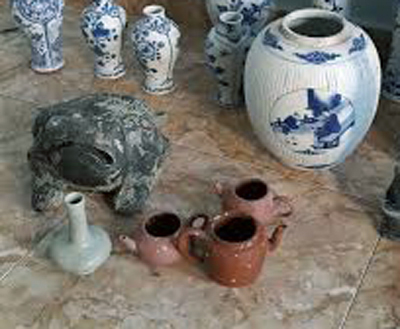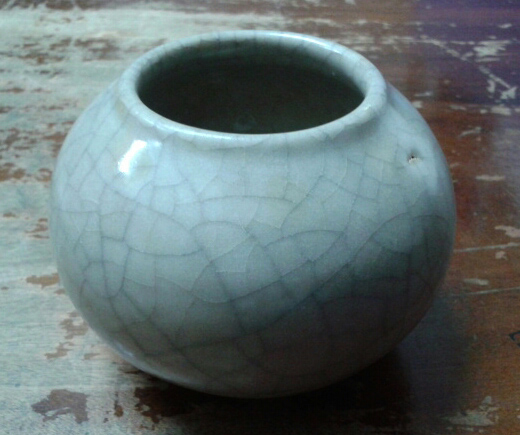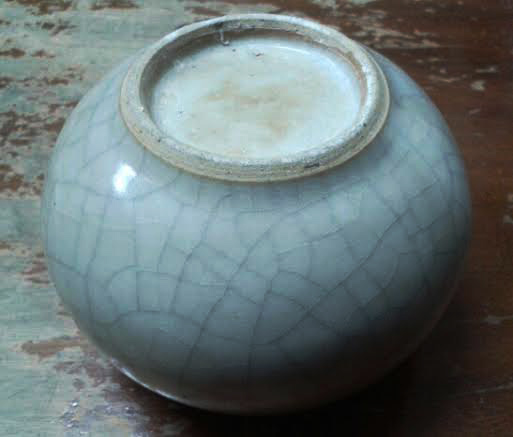Kangxi Porcelain Discovered in Shipwreck Near Indonesia’s Bintan Island
Discovery and Market Appearance
In 2013, blue and white porcelain wares began surfacing in Singapore’s antique markets. By 2014, large quantities had reached Singapore, Jakarta, China, Malaysia, Thailand, and Vietnam. The bulk of the artifacts consisted of blue and white cups and saucers, alongside plates, bowls, vases, jars, covered boxes, and ceramic figurines. These items exhibit characteristics typical of Kangxi-period porcelain, with a range and style similar to those found in the Ca Mau shipwreck.
An Indonesian dealer, familiar with Chinese characters, reportedly came across a broken piece inscribed with Kangxi Gengyin Zhong Xia (康熙庚寅仲夏), dating it to 1710 A.D. Unfortunately, the fragment was not acquired due to its damaged state. This dating is significant as it bridges the historical gap between the Vung Tau wreck (1690s) and the Ca Mau wreck (1723–1735).
The Wreck: Location and Historical Context
Investigations traced the origin of these artifacts to a shipwreck southeast of Bintan Island, Indonesia. The wreck is believed to be that of a large Chinese junk, approximately 100 meters in length. This location aligns with historical Chinese trade routes used for commerce with Southeast Asia.
The ship’s likely destination was Batavia (modern-day Jakarta), a major trading hub for the Dutch East India Company (VOC). Batavia distributed goods such as tea, silk, and porcelain from China, as well as spices from the Indonesian archipelago.
 |
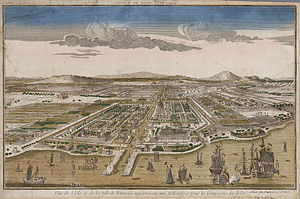 |
| Batavia (modern day Jakarta) 1780 A.D |
Chinese Junk Trade and the Hong Merchants
By the late 17th century, Chinese junks were operated by wealthy merchants with connections to the Guangdong governor or military officials. These merchants, known as hong (行) merchants, were granted the right to handle foreign trade. In 1720, they formed an association to regulate commerce and enforce conduct codes for foreign traders in Canton (modern-day Guangzhou).
Notable families in the trade included Zhang (张), Ye (叶), Cai (蔡), Qiu (邱), Yan (颜), Chen (陈), and Pan (潘). A seal marked 潘廷采印 found in the Ca Mau wreck suggests that the Pan family may have operated that vessel.
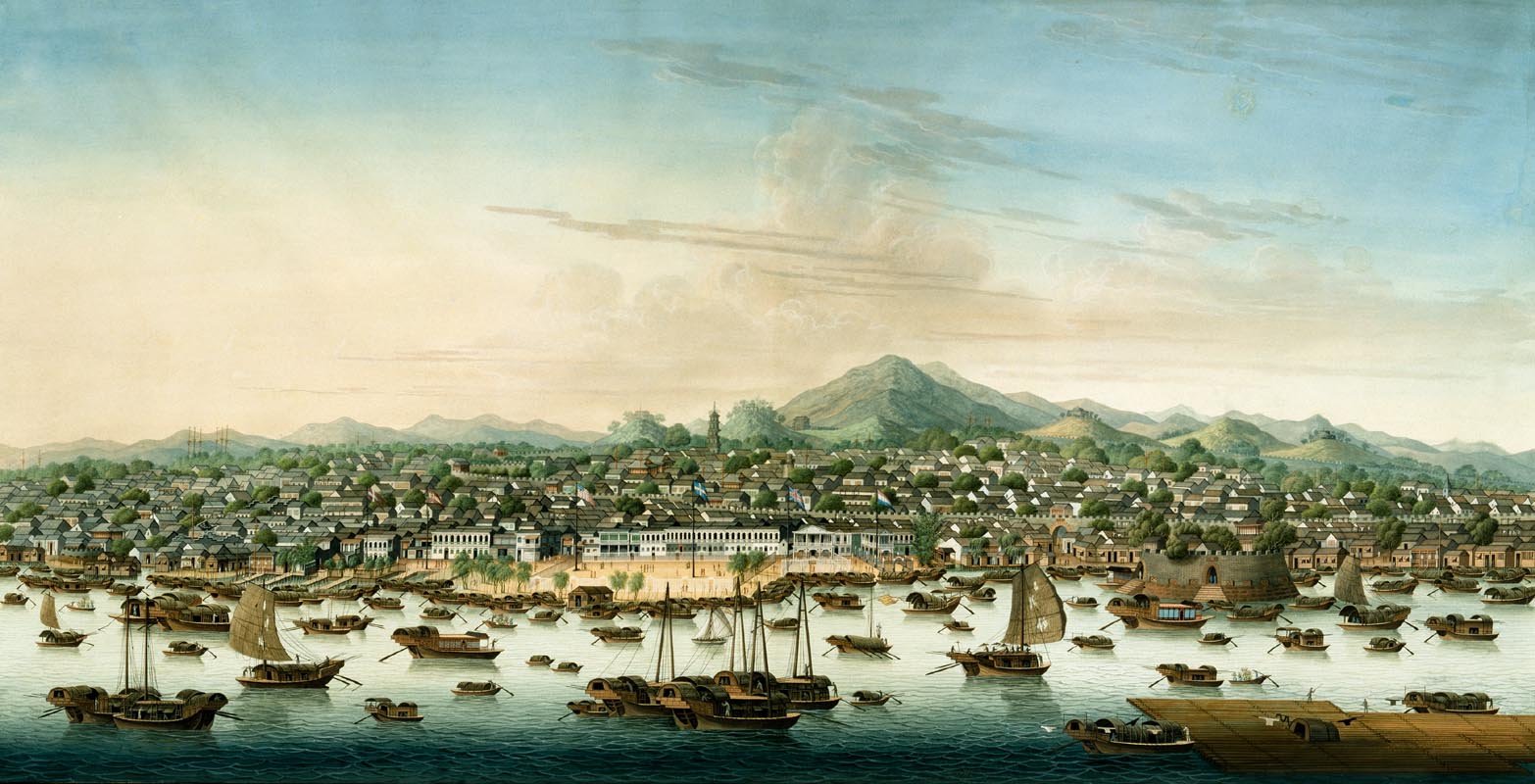 |
| Canton (Modern Day Guangzhou) |
European Demand and the VOC’s Role
Although the VOC halted official porcelain purchases in the 1690s due to oversupply, private merchants continued shipping over 2 million pieces annually to Batavia. These merchants did not source porcelain directly from Guangzhou but relied on Chinese traders to transport goods to Batavia.
Market Distribution
- 60% of the porcelain was sold within Asia
- 40% was
exported to Europe,
driven by:
- Tea/Coffee Culture: By the early 18th century, European demand for tea sets (cups, saucers, teapots) surged, with over 1,500 coffeehouses in London alone.
- Dining Ware: Bowls and plates for everyday use.
- Decorative Items: Vases, jars, and figurines for display.
European Fascination with Porcelain
- Royal Collections: Queen Mary of England (wife of William III) popularized porcelain displays in palaces, influencing European trends.
- Interior Design: Architect Daniel Marot, serving William III, incorporated porcelain into engravings of wall sections and chimneypieces.
- Cultural Impact: Writer Daniel Defoe noted porcelain’s rise as a status symbol, describing homes “grievously” overfilled with porcelain collections.
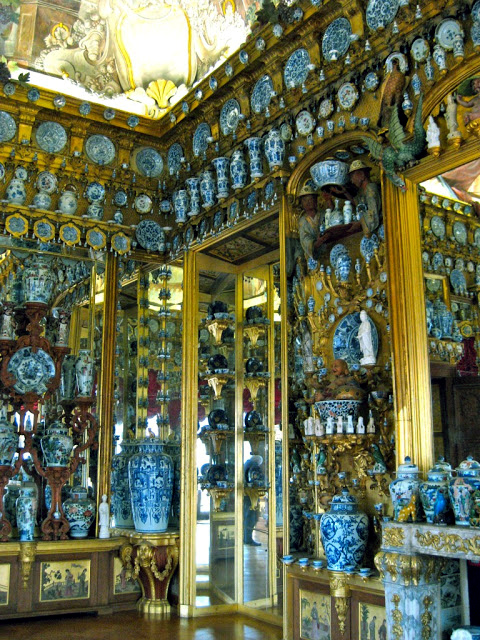 |
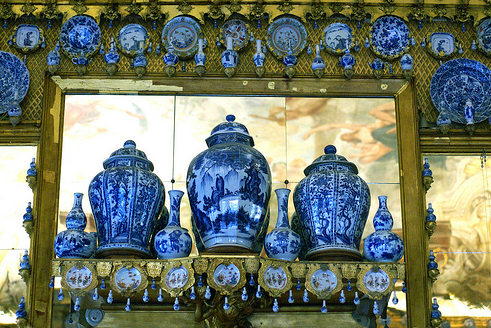 |
|
Porcelain Cabinet at Charlottenburg Palace in Berlin |
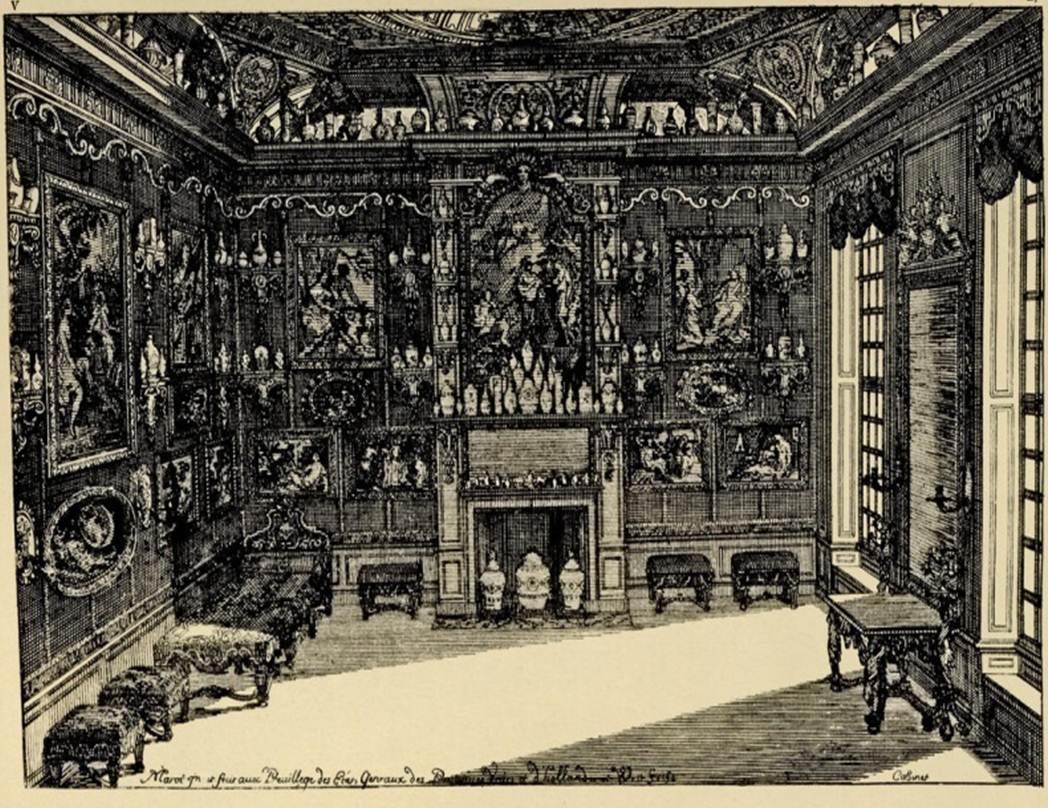 |
|
Daniel Marot's Print |
Analysis of the Porcelain Cargo in the Wreck
The wreck yielded a diverse range of porcelain items, categorized as follows:
1. Cups and Saucers
- Saucers: 8–12 cm in diameter
- Cups: 6.5–7.5 cm
- Types:
- Fine, thin-walled: Mold-shaped with intricate designs.
- Thick-walled: More utilitarian in style.
- Batavian ware: Thickly potted with dark brown glaze.
2. Cups Without Saucers
- High-quality cups with fine painting, often lacking saucers.
3. Teapots
- Many teapots were found stacked inside large blue-and-white jars (~60 cm tall).
- Four common designs were recovered.
4. Garniture Sets
- Beakers and lidded vases (18–30 cm tall), often in sets of 3, 5, or 7.
- Decorations ranged from European-style cartouches to traditional Chinese motifs.
- Some were enhanced with overglaze details, though enamels have degraded over time.
5. Large Jars and Gu Vases
- 56–60 cm tall.
- Rare finds include depictions of Dutch ships, European merchants, and Southeast Asian crew.
- Some jars illustrate Chinese merchants on horseback and European traders in Canton’s foreign quarter.
- Common motifs include birds, floral patterns, and landscapes.
6. Miniature Vases
- 5.5–7 cm tall, likely intended for European porcelain cabinets.
7. Bowls
- European
Market Bowls:
- Four types, each 15 cm in diameter.
- A brown-glazed exterior version measuring 18 cm.
- Floral designs in 15 cm and 18 cm sizes.
- Islamic
Market Bowls:
- Decorated with lotus, chrysanthemum, or lingzhi fungus motifs.
- Southeast
Asian Market Bowls:
- Roughly potted, likely from Fujian or Guangdong.
8. Plates
- Various sizes: 14 cm, 21 cm, 27 cm, and a rare 35 cm variant.
- Mostly from Jingdezhen, finely potted and thin-walled.
9. Covered Boxes
- Primarily floral motifs, intended for the Southeast Asian market.
- Types:
- Blue-and-white sets of five.
- Covered boxes (9.5–10 cm diameter).
- Tall covered jars in three sizes, likely for the Islamic market.
Other Notable Finds
- Melon-shaped Jarlets: 6–10 cm in diameter, some missing covers.
- Blue and White Writing Set: A rare tray with three square vessels (ink well, pen holder, and sander).
- Ewer Set: Includes two ewers and a third spoutless vessel, likely for Europe.
- Stem Dishes: 10 cm diameter, well-painted with human figures.
- Stem Cups: 5 cm diameter, pained with floral motif.
- Kendis: Well-decorated blue and white Islamic market vessels.
- Coloured Lead-Glazed Figurines: Many severely degraded; relatively few found.
Rare Finds
- Monochrome Vessels: Celadon-glazed vases, ge-glazed jars.
- Yixing Teapots: Only three recovered, possibly crew belongings.
- Blue and White Ribbed Jar: A finely decorated solitary find.
- Frog Figurine: Large white biscuit form, similar but larger than Ca Mau wreck finds.
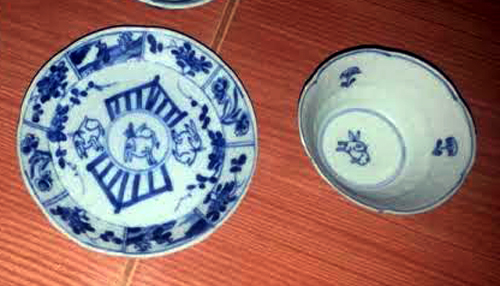
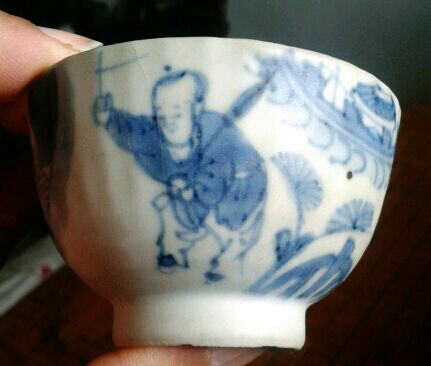
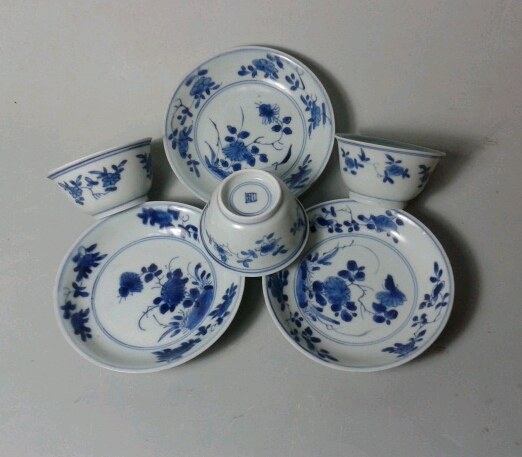
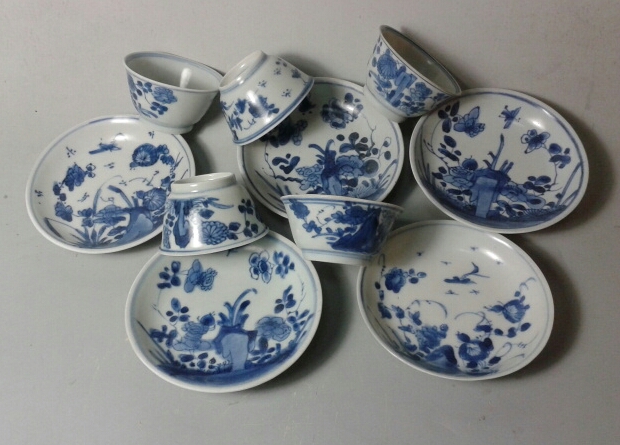
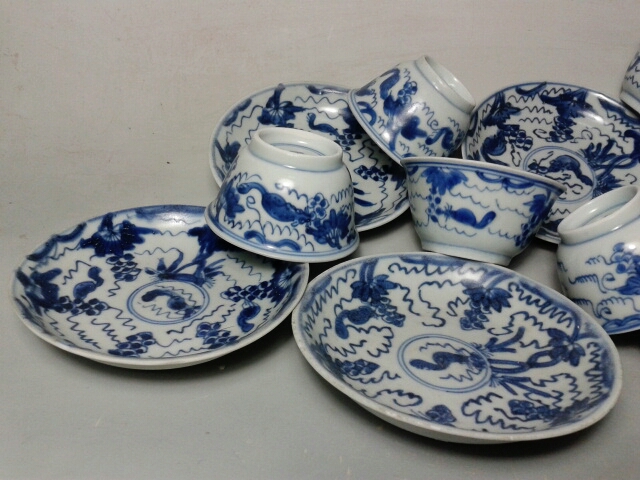
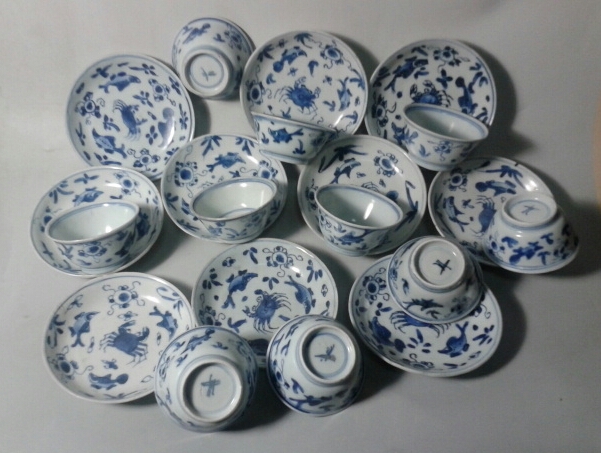
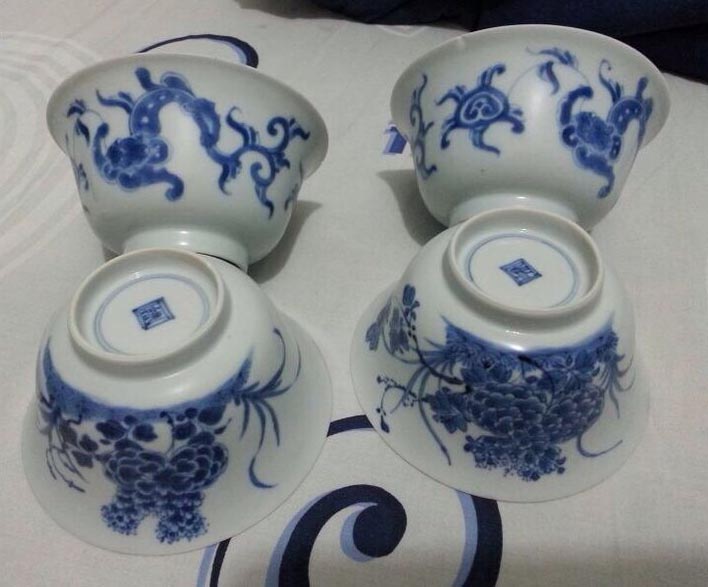
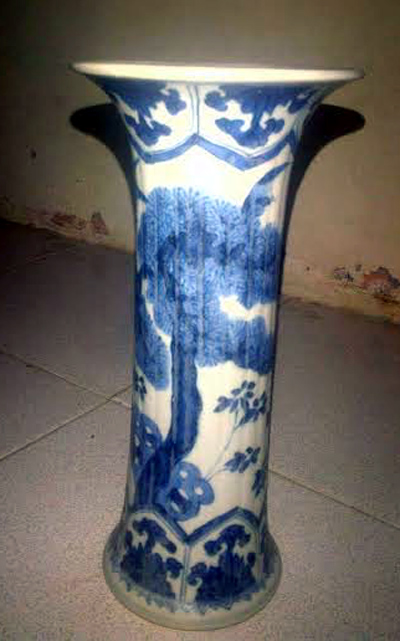
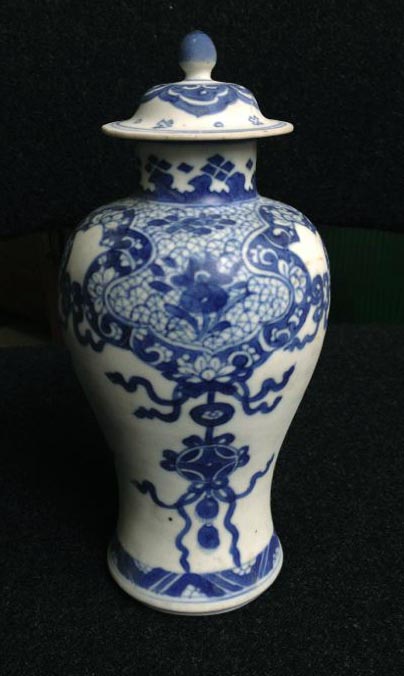
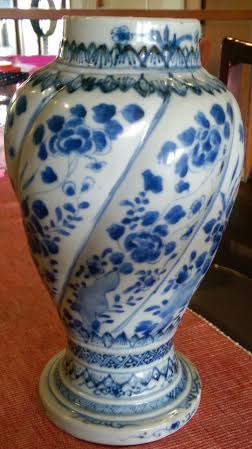
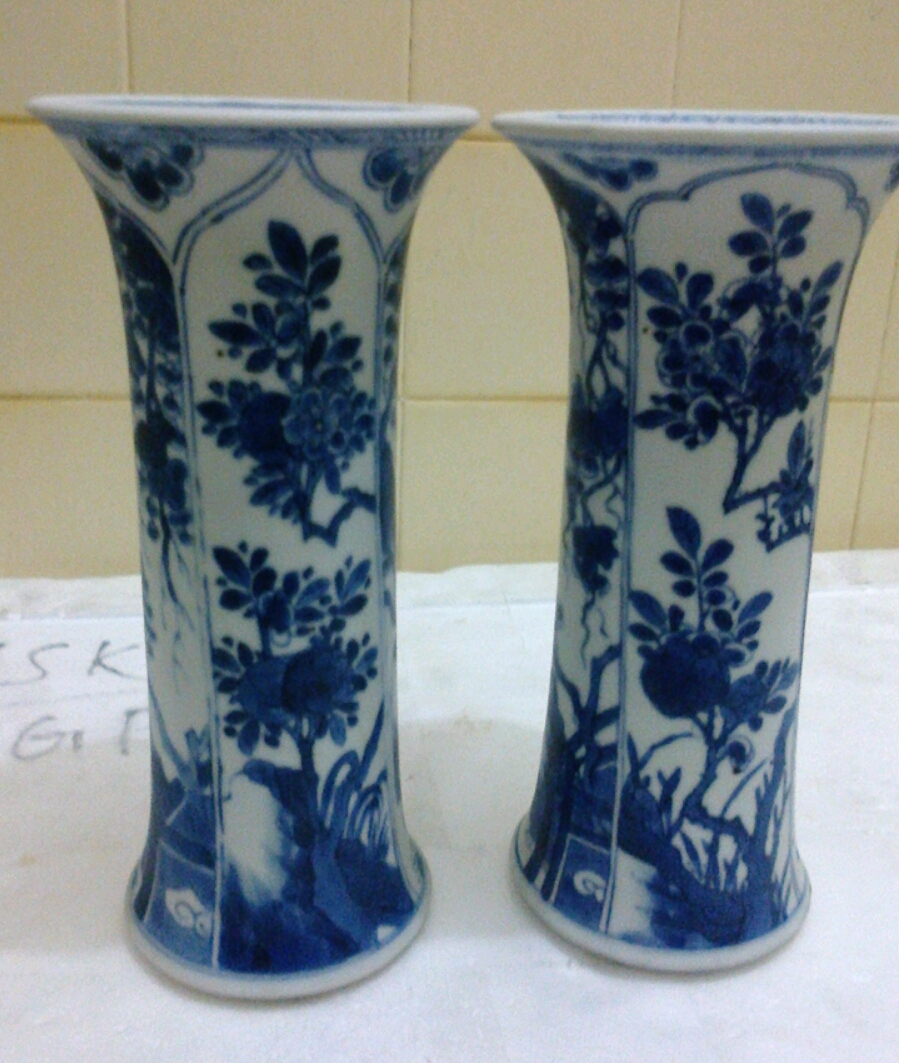
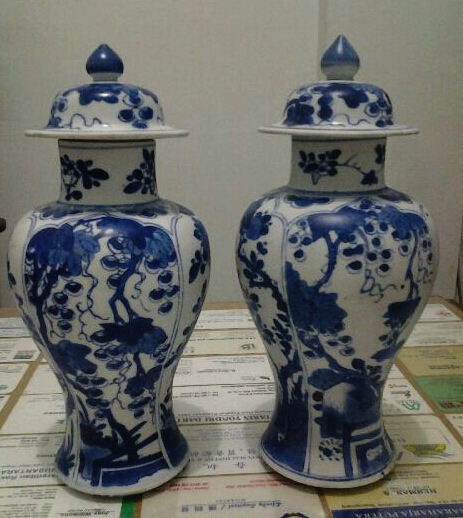
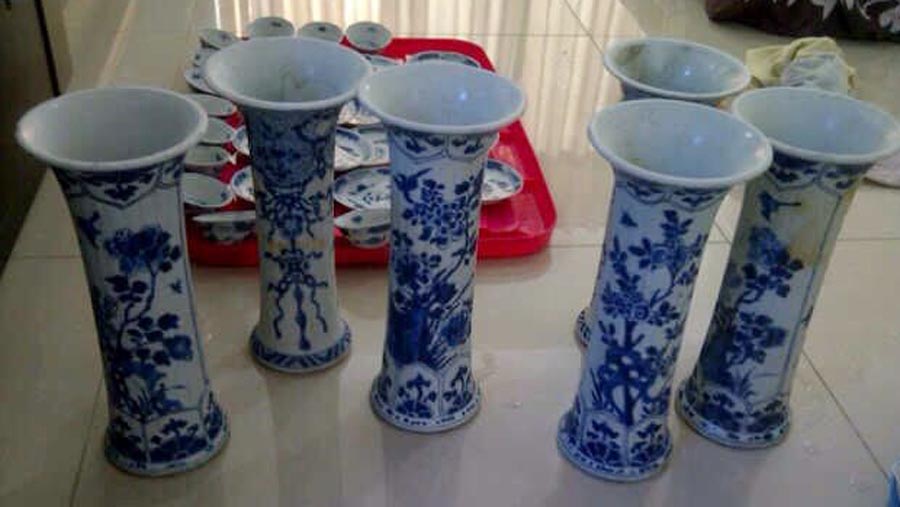
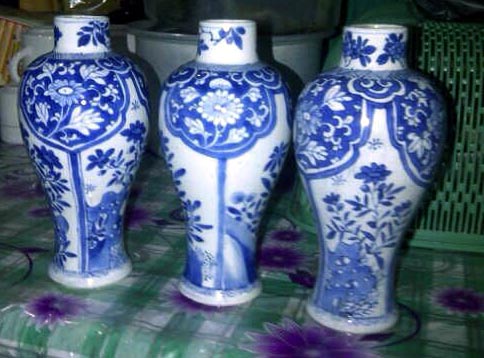
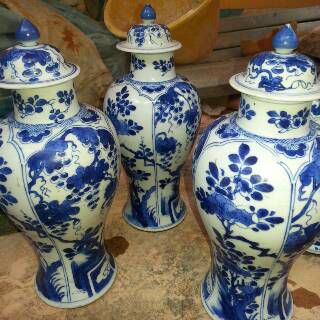
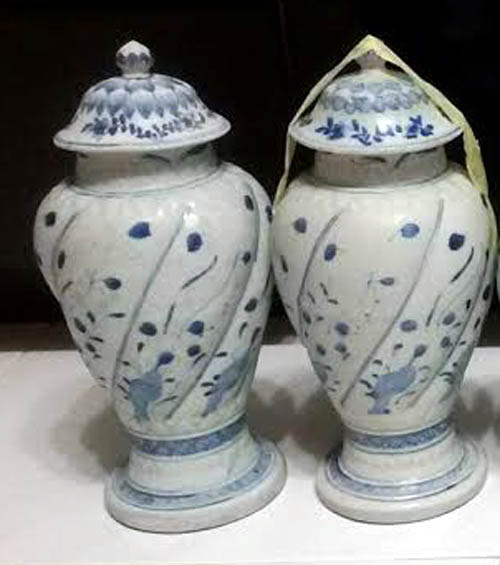
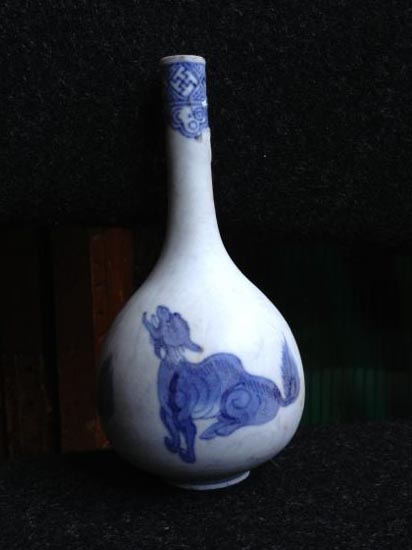
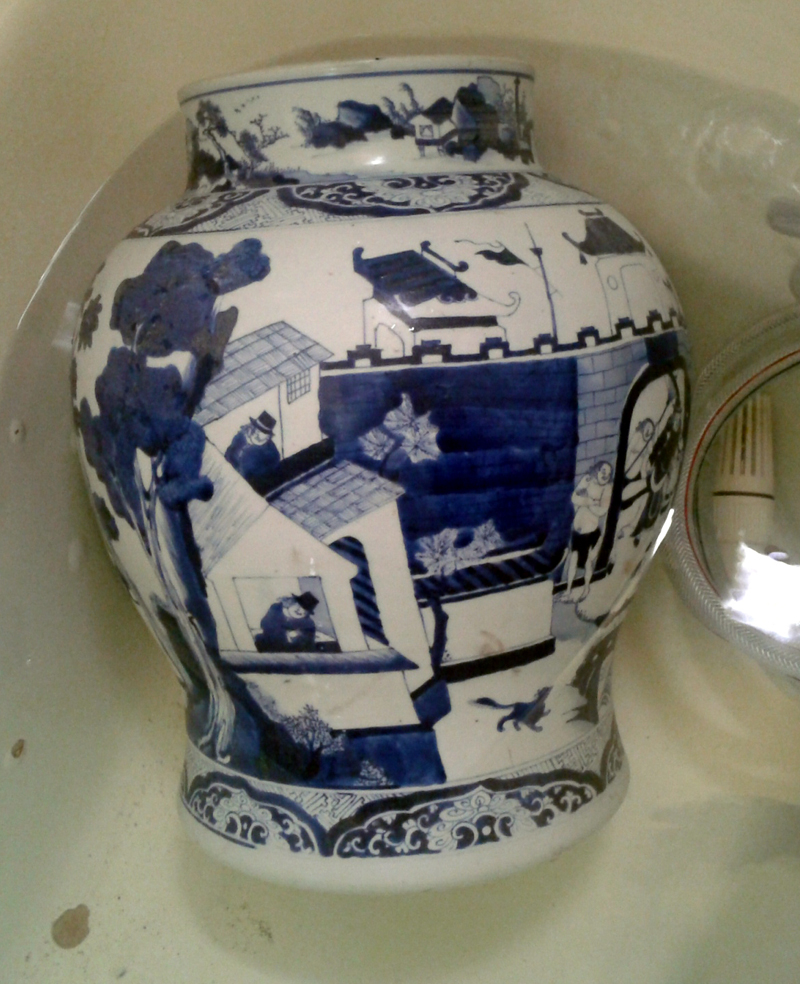
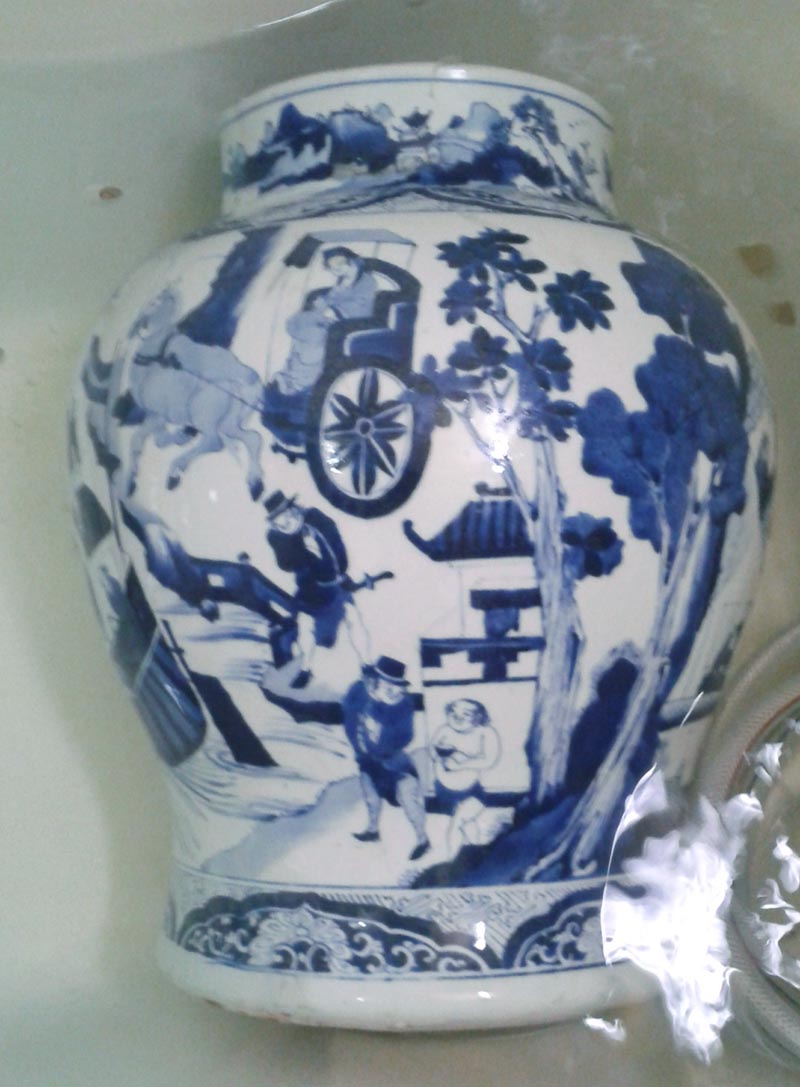
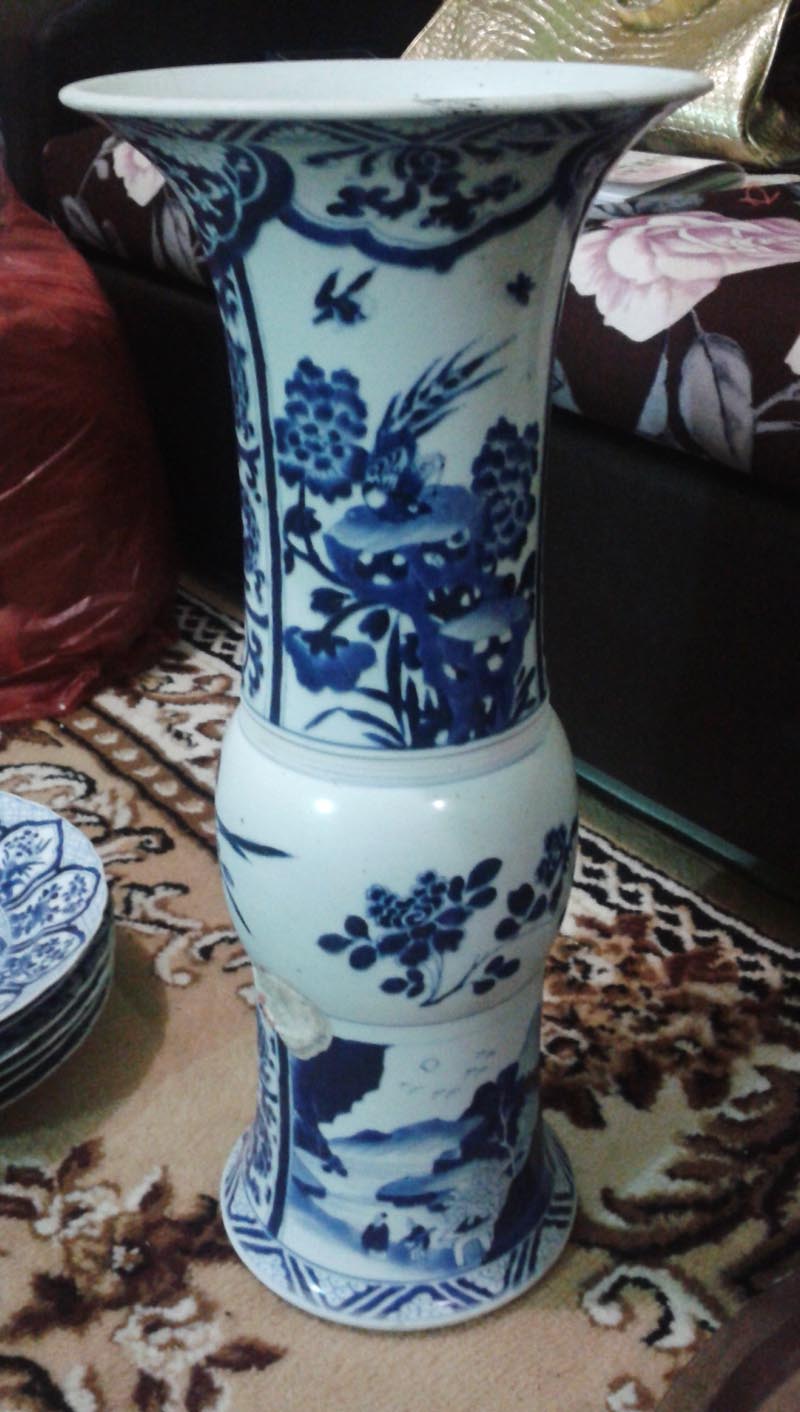
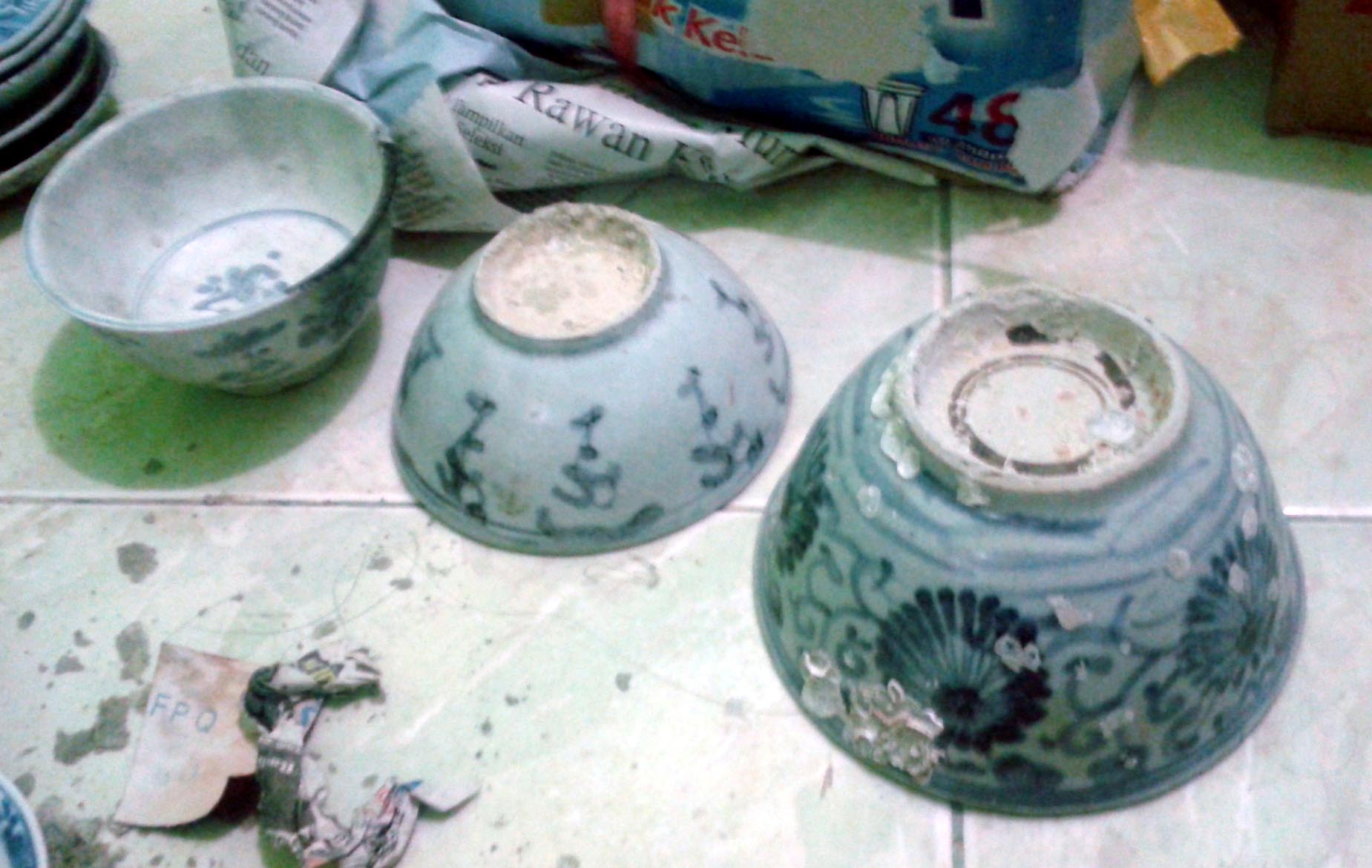
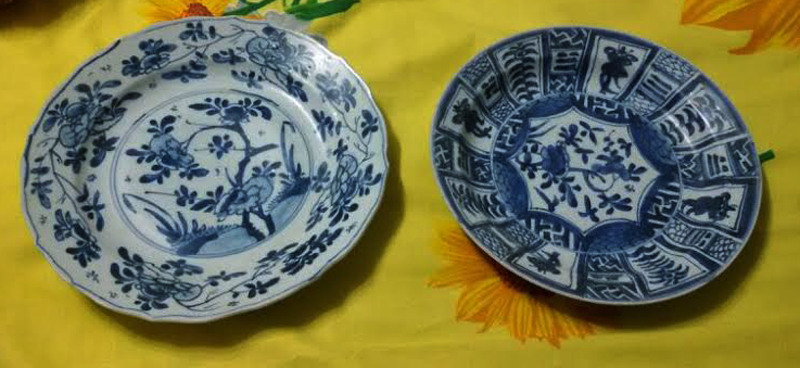
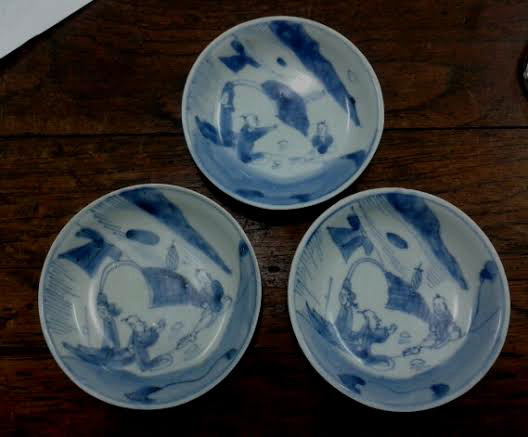
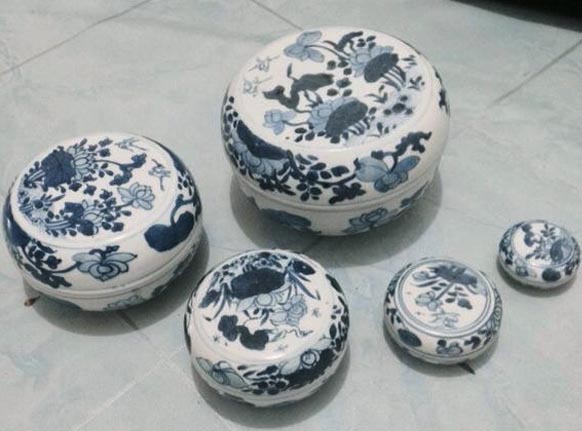
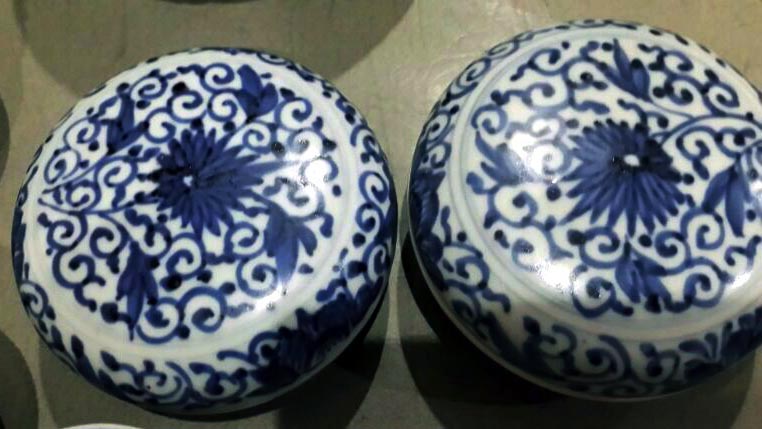
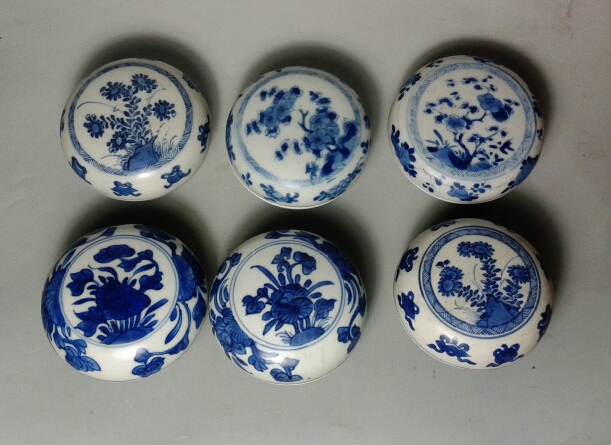
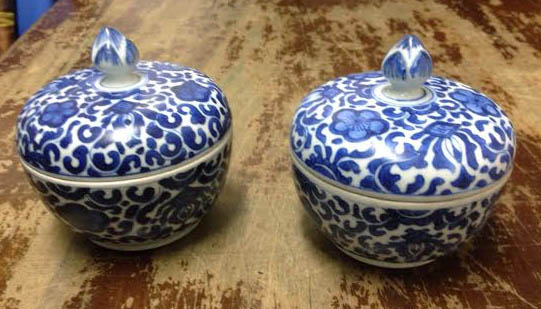
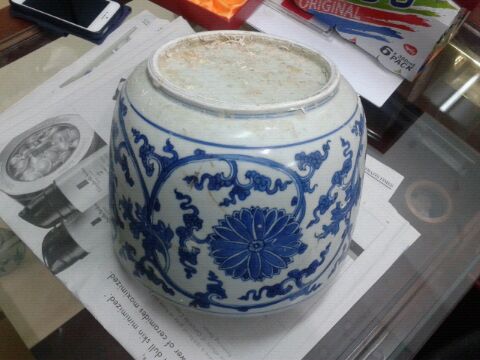
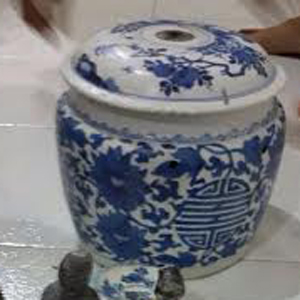
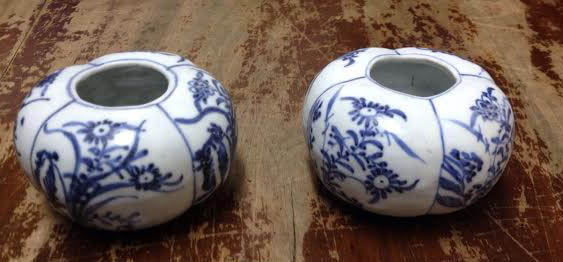
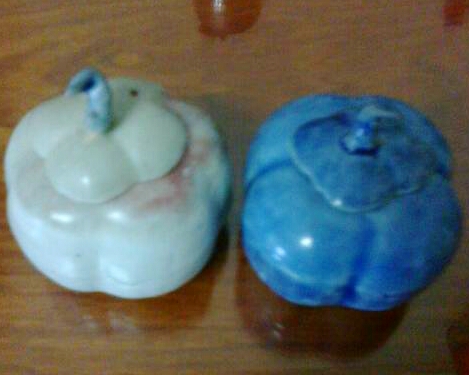
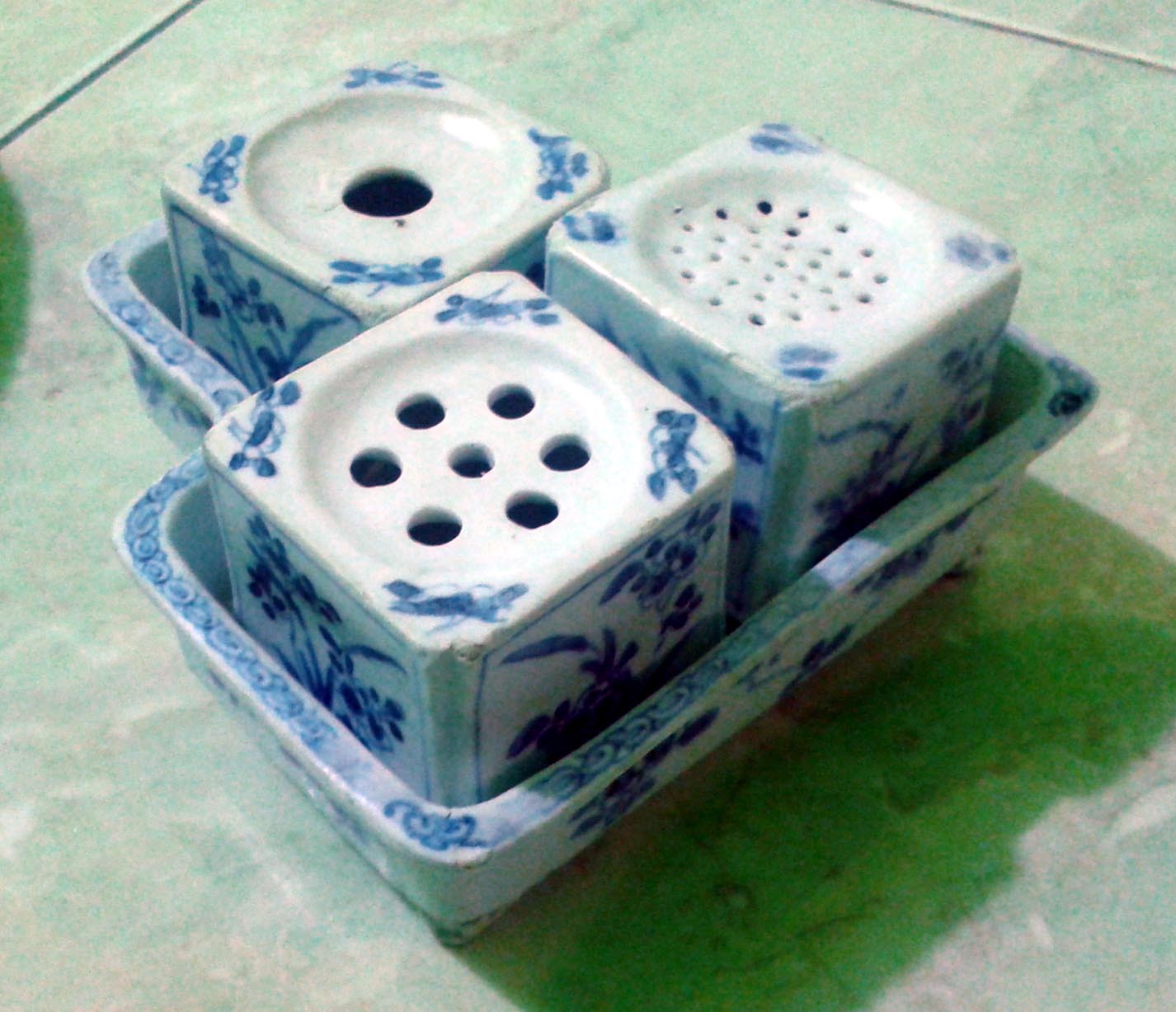
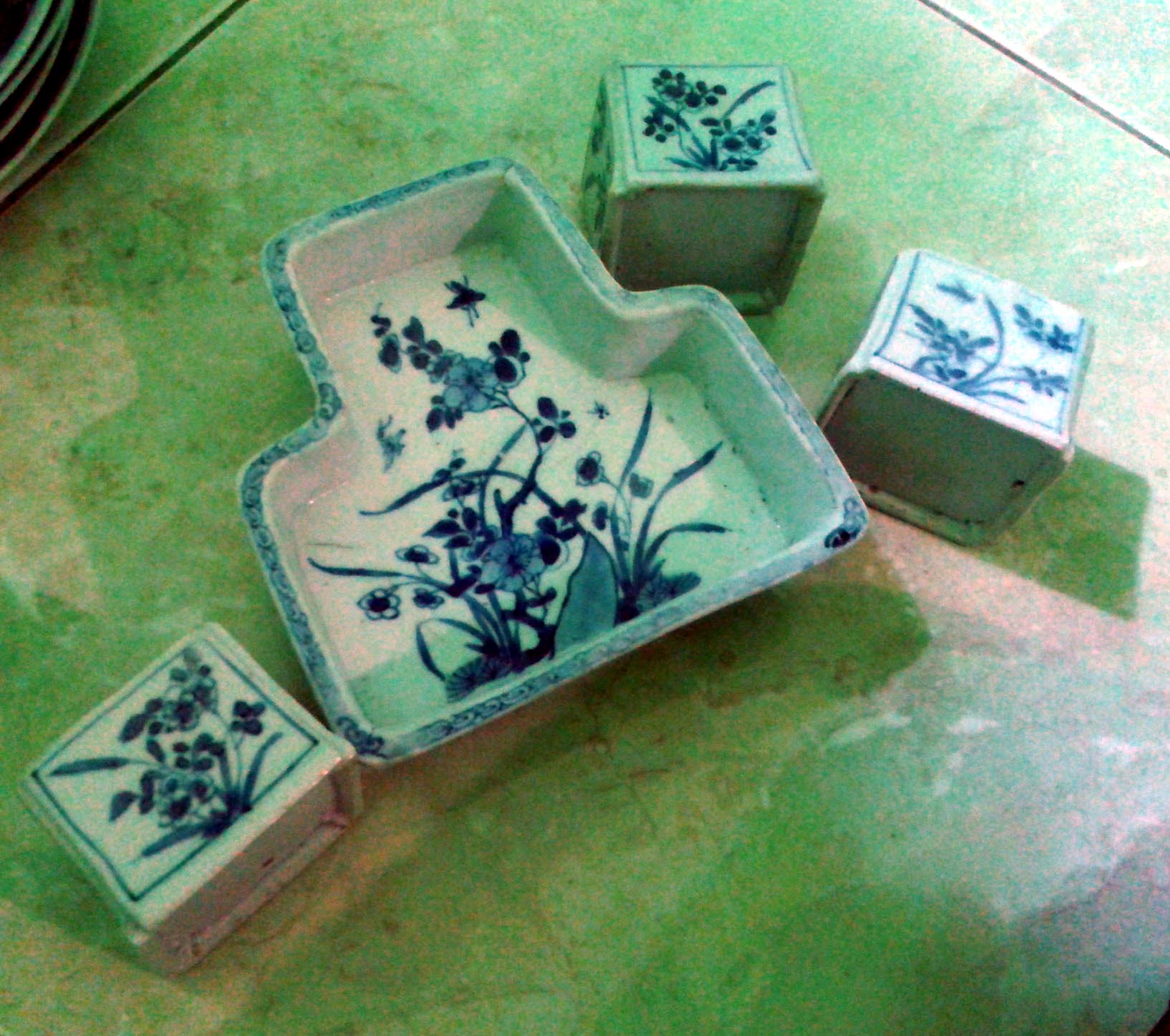
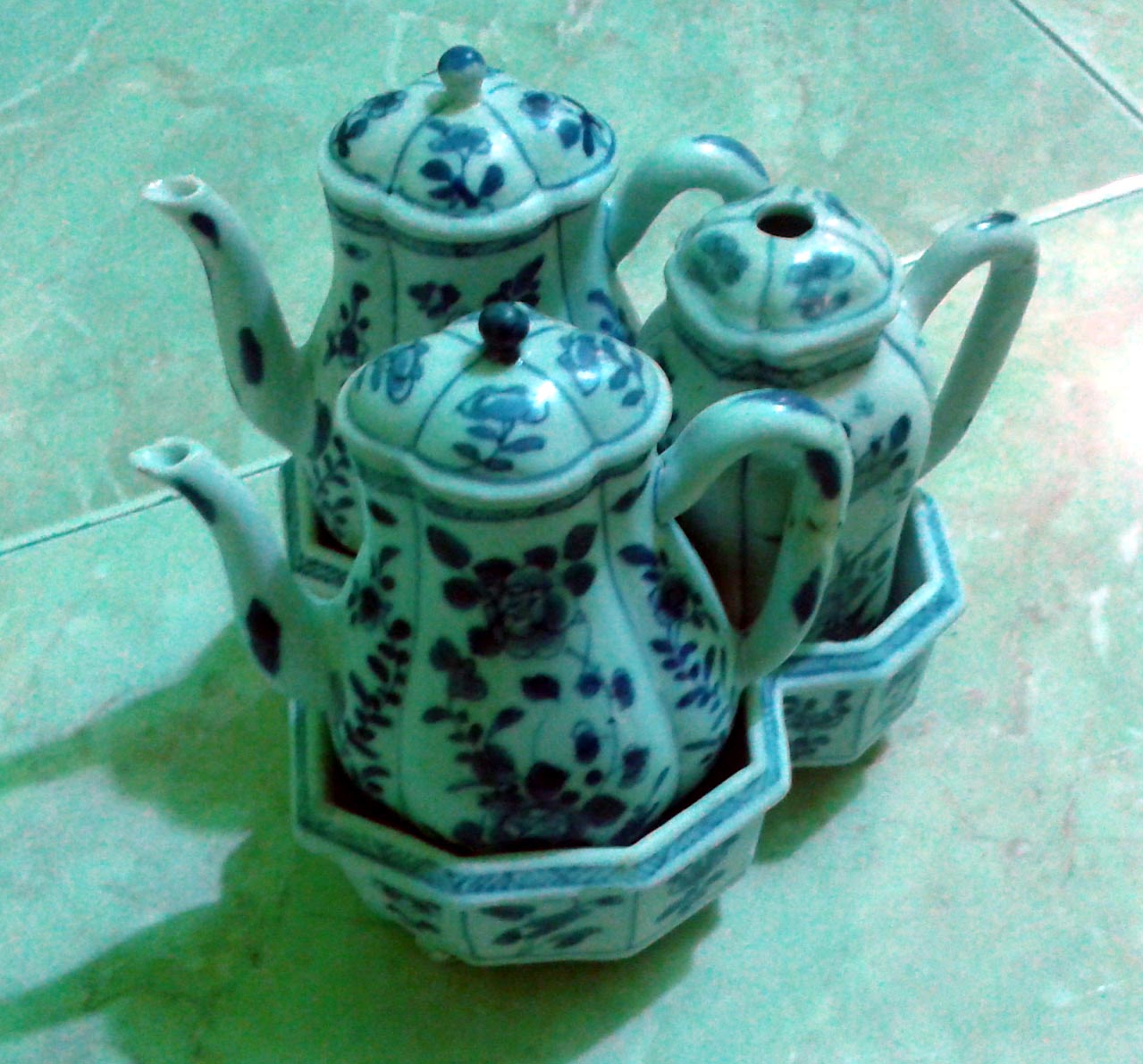
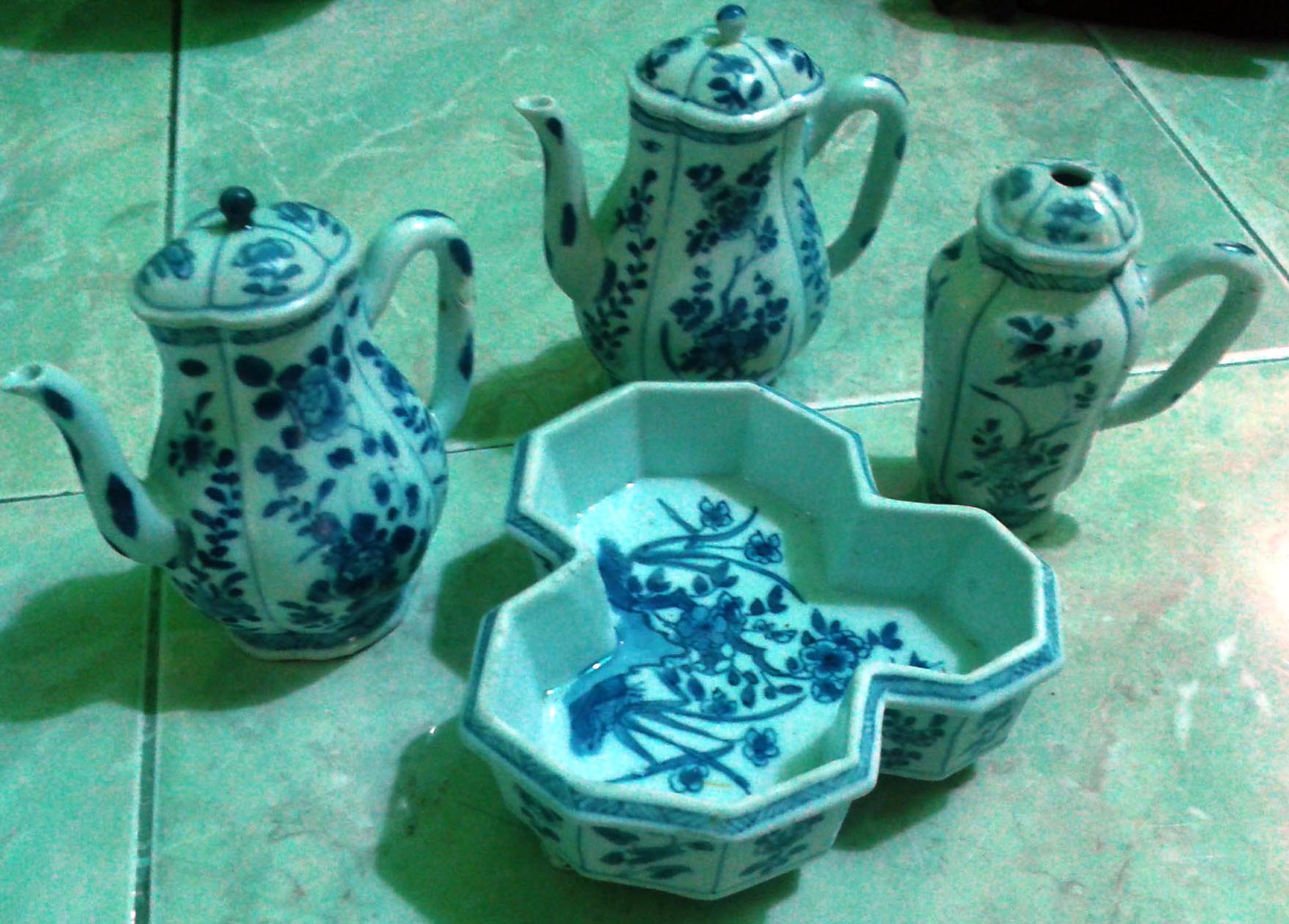
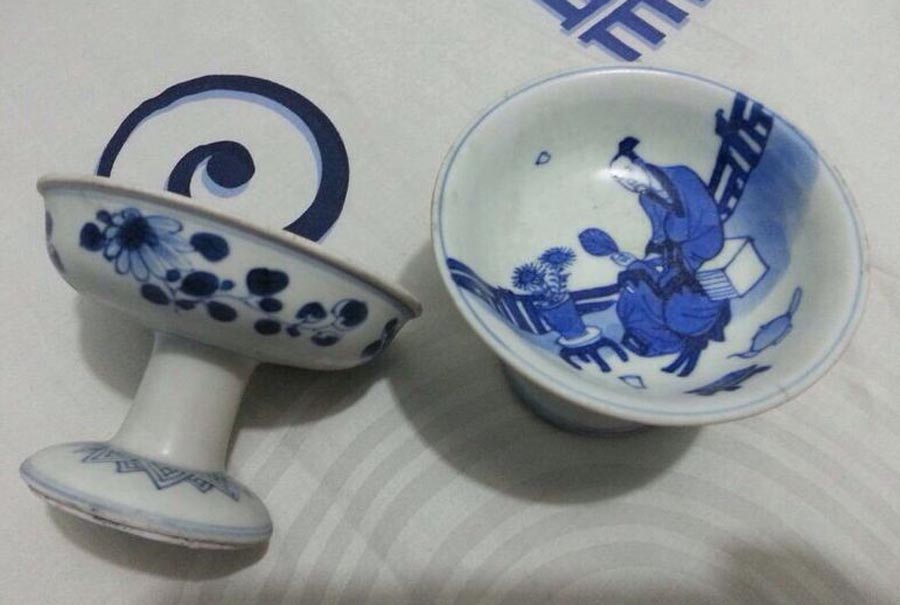
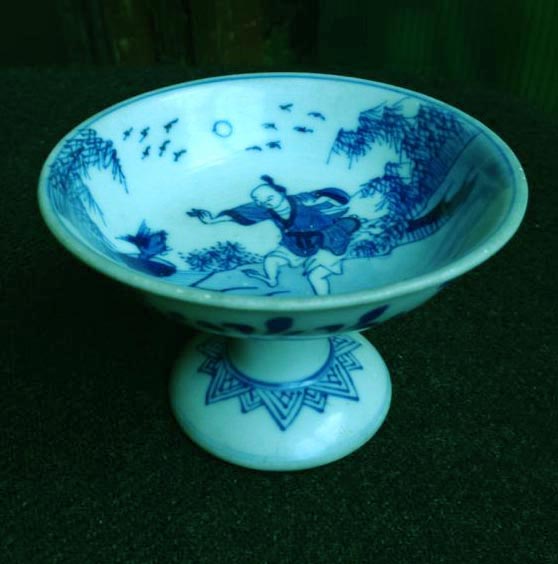
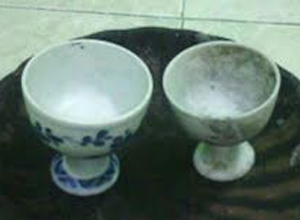
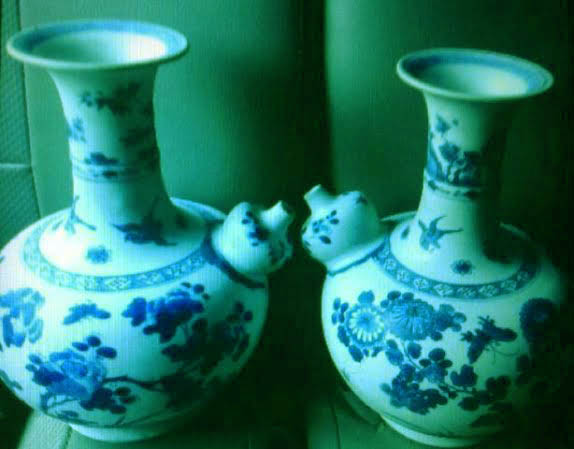

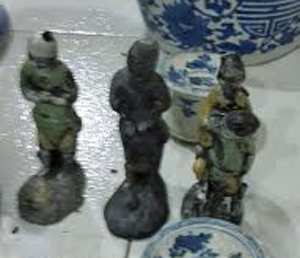 Jingdezhen-made
Lead glaze figurines
Jingdezhen-made
Lead glaze figurines